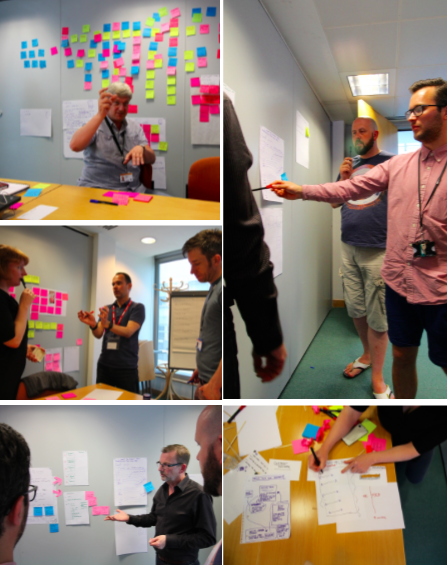In my last blog post on redesigning Digital Services I said that we’re looking at applying user-centred design principles to the framework agreement and call-off contract.
At the moment, the Digital Services contract documents contain over 88,000 words. Based on an average adult reading speed (around 250 words per minute), it would take 6 hours to read them, and that’s assuming that a single read-through would be enough to comprehend the contract.
Taking a different approach
Lots of things make current contracts hard to use and inaccessible to the people that could benefit from them.
Contracts are rarely designed using modern techniques to create digital content, including legal content. They’re often worded in a way that suggest an expectation that something’s going to go wrong. Lots of content uses negative or controlling language, eg termination; consequences; liabilities; penalties; prevention; safeguarding; dispute and so on.
As part of the Digital Services redesign, we’d like to look at replacing negative language with something more neutral, and get rid of inaccessible aspects of the contracts such as:
- obscure terminology and language
- inconsistent and duplicate content
- lack of structure
- poor format and layout
- the unnecessary volume of words used
The need for plain English
The Digital Marketplace is about helping those transforming public services by making it simpler, clearer and faster for them to buy what they need. The majority of buyers and suppliers aren’t legal professionals and aren’t overly familiar with legal terminology. Let’s aim to make our contracts reflect this.
In his blog post, Doing the hard work to make things simple, Mike Bracken nicely sums up how the Ministry of Justice (MOJ) are working to make things simple (our fourth design principle), for the legal side of Civil Claims:
There are two ways to deal with legal jargon: either rewrite it in plain English, or keep it and provide plain English notes that explain the legalease.
Working closely with the Crown Commercial Service (CCS), this is exactly what we are aiming to do.

We’re jamming
Simon Gough from Redfront hosted the first of our four ‘contract design jams’, or workshops, for people with an interest in transforming government contracts. Our attendees came from a range of disciplines across government communities, including:
- user research
- style and content
- design
- Crown Commercial Service (CCS) Complex Transactions team
- CCS Customer Operations team
- data.gov.uk
- the Digital Services team
Government Legal Department will be joining us for the next contract design jams.
In the first jam we thought about who the users of a contract could be, and what their needs might be. From there, we created contract user personas and began prototyping a minimum viable contract and maps of user journeys through the contracting process.
Open contracts mean better contracts
Our tenth design principle is ‘Making things open makes them better’, though contracts aren’t very open sometimes. They're not machine-readable, nor do they allow for important contracting data to be captured in an accessible, structured and repeatable way. This is why I’m very interested in what’s being done to support the development and adoption of the Open Contracting Data Standard (OCDS).
I’m excited to see what’s possible when the right people are involved in co-designing clearer, simpler and visual contracts that meet user needs.
Hope you like jamming too
We’re planning on showing our work so far and sharing our progress on the blog after the third contract design jam, which takes place on 9 July.
Credits
Thanks to research and information designer Stefania Passera at multidisciplinary research group, Mind, and contract coach Helena Haapio, whose work in this area has been thorough and useful.
